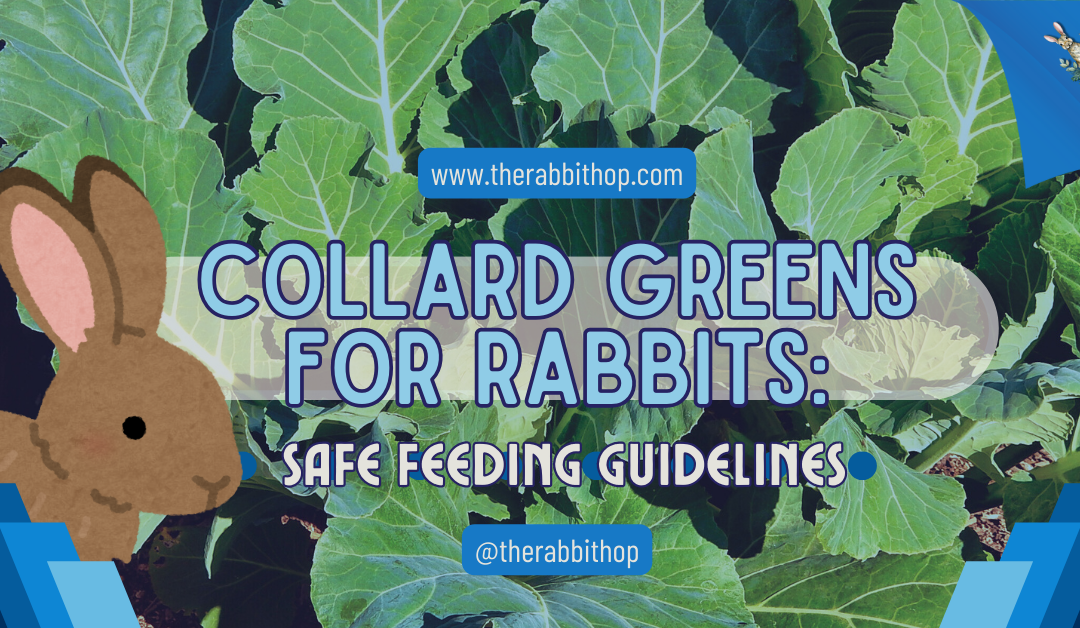Ever noticed those vibrant collard greens at the market and wondered if your bunny could enjoy them too? Well, rabbits are actually natural herbivores and leafy greens like collard greens can be a delightful addition to their diet.
That’s why I decided to dig deeper and explore the world of collard greens for our furry friends. This article will explore the benefits these greens offer, how to safely introduce them to your rabbit’s diet, and some potential risks to be aware of. So, buckle up and get ready to learn how to incorporate this tasty and nutritious veggie into your rabbit’s meal plan!
Collard Greens for Rabbits: Safe Feeding Guidelines
Collard greens are a leafy vegetable prevalent in human diets and have gained recognition as a healthy addition to a rabbit’s meal plan.
They are packed with essential nutrients that can offer various health benefits to rabbits.
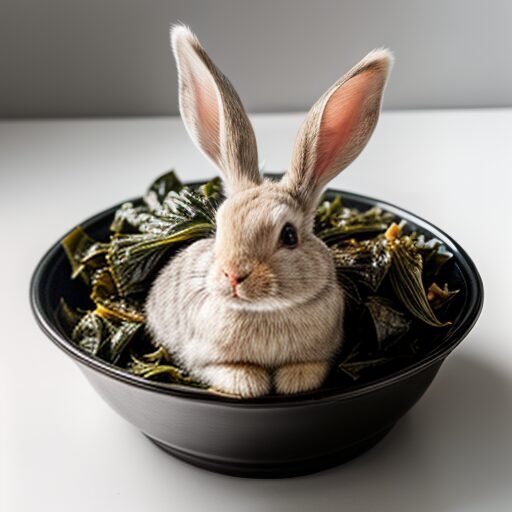
These vegetables provide a good source of vitamins, minerals, and dietary fiber which are vital components for a rabbit’s well-being.
However, like any food item introduced to a rabbit’s diet, it is essential for pet owners to understand the proper way to incorporate collard greens into their pet’s feeding routine.

When it comes to feeding rabbits collard greens, moderation is key.
Although these green leafy vegetables can serve as a beneficial supplement to the primary diet of hay, they should be provided in controlled amounts to prevent any adverse effects on a rabbit’s health.
It is necessary to introduce collard greens gradually into a rabbit’s diet to ensure that their digestive system can adapt without complications.
Knowledgeable handling and feeding practices can help mitigate potential risks, such as digestive upset or an imbalance in nutrients.
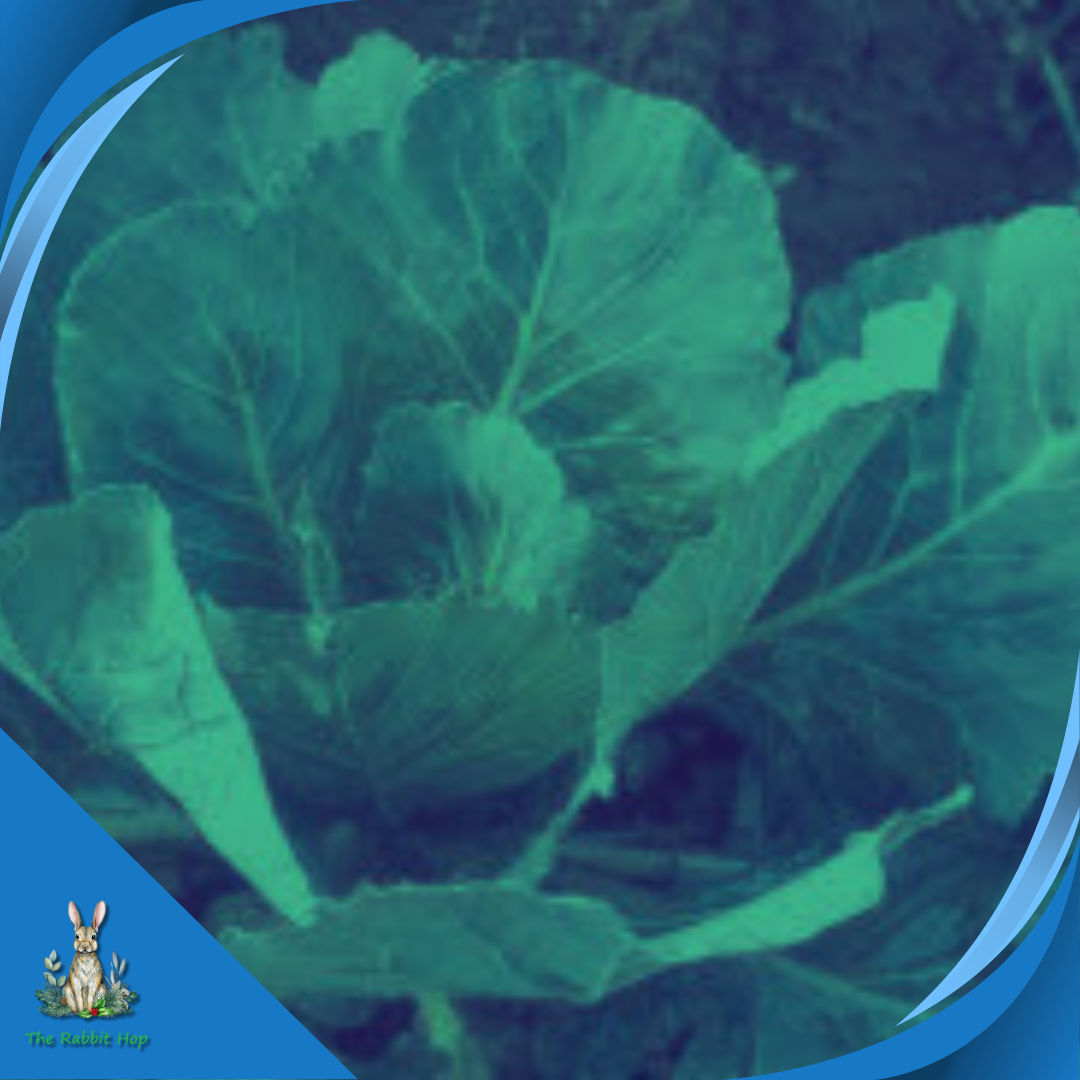
Key Takeaways
- Collard greens can be a nutritious addition to a rabbit’s diet.
- Gradual introduction and moderation are crucial when feeding rabbits collard greens.
- Awareness of feeding practices and potential risks ensures safe dietary incorporation.
Nutritional Profile of Collard Greens

Collard greens offer a range of essential nutrients that are beneficial to a rabbit’s health.
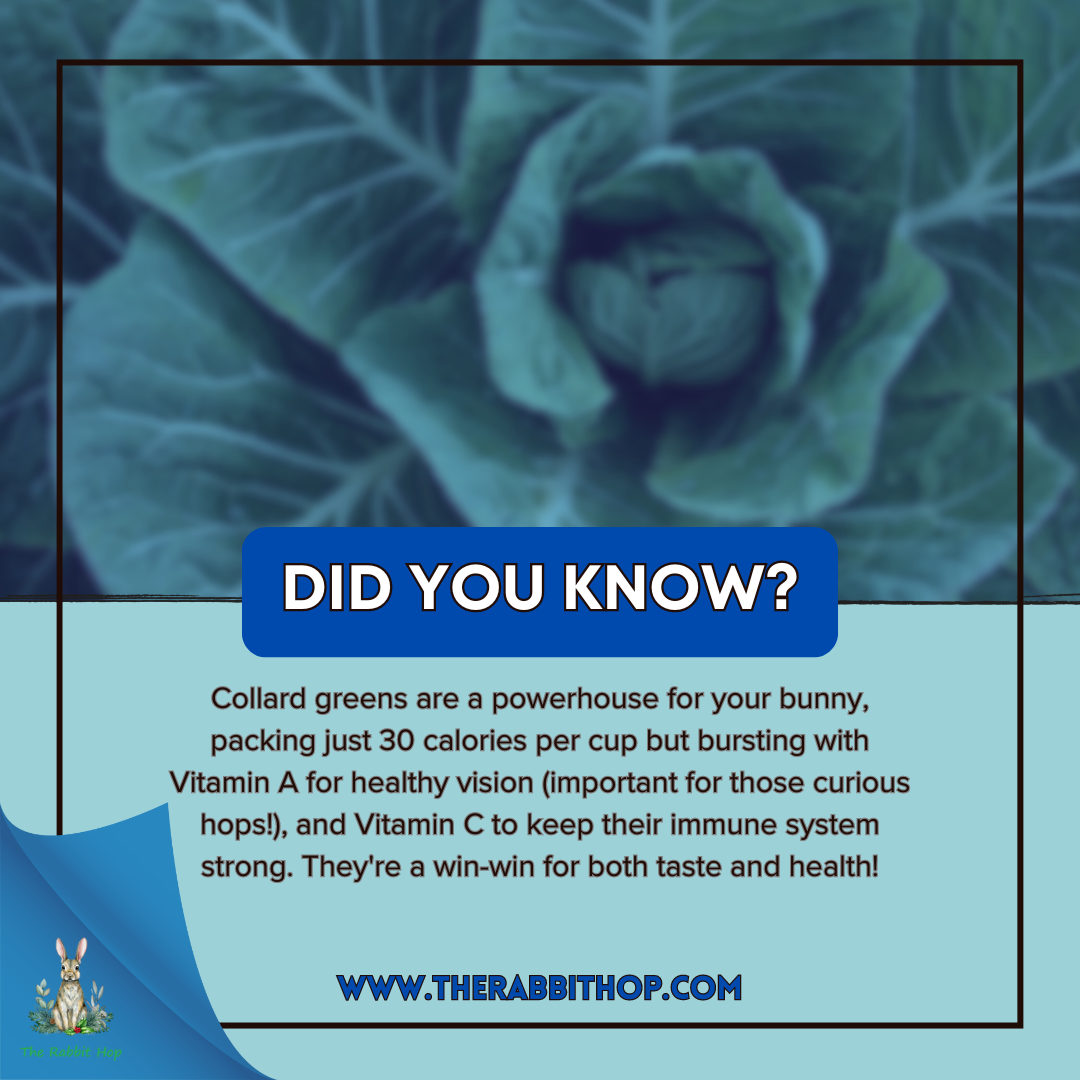
Vitamins and Minerals
Collard greens are a rich source of vitamins such as Vitamin A, Vitamin C, and Vitamin K.
They also provide vital minerals like calcium, which is crucial for bone health in rabbits.
Specifically, collard greens contain:
- Vitamin A: Important for rabbits’ vision, bone growth, and reproductive health.
- Vitamin C: Assists in wound healing and immune function.
- Vitamin K: Essential for blood clotting and bone metabolism.
Fiber Content
Dietary fiber is abundant in collard greens, which is critical for the proper digestion and overall gut health of rabbits. The fiber helps to:
- Maintain gastrointestinal health.
- Prevent issues like hairballs and diarrhea.
Sugar and Fat Levels
Collard greens have a low sugar content, featuring only 0.46 grams of sugar per serving, minimizing the risk of digestive problems and obesity in rabbits.
Moreover, they are low in fat, which helps maintain a healthy weight and reduces the chance of fatty liver disease.
Health Benefits for Rabbits
Collard greens are a nutritious addition to a rabbit’s diet, providing essential vitamins and minerals, promoting digestive health, supporting dental maintenance, and contributing to effective weight management.
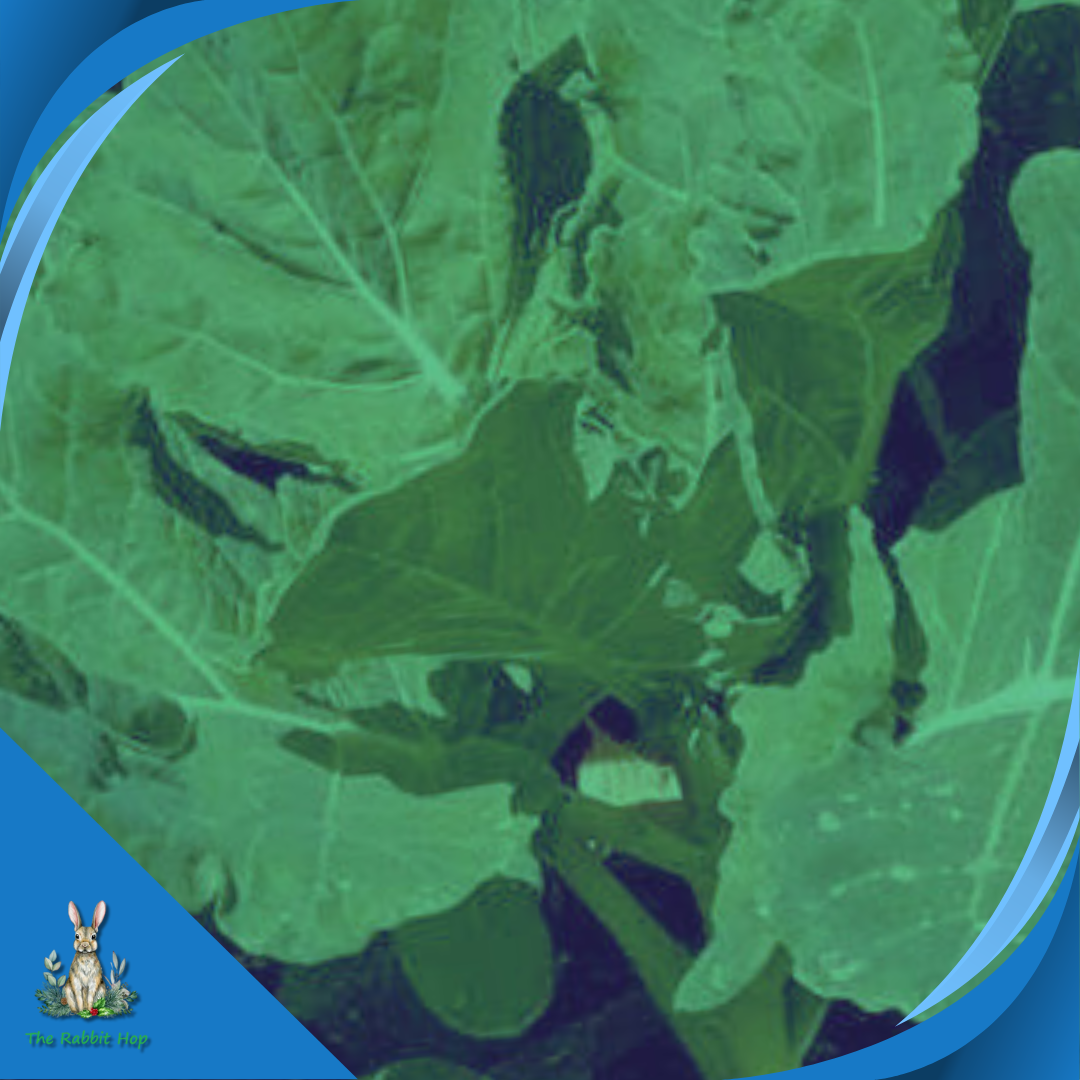
Digestive Health
Rabbits receive a substantial boost in dietary fiber from consuming collard greens, which is crucial for their digestive health.
Adequate fiber intake helps maintain regular bowel movements and prevents issues such as GI stasis, a common and dangerous condition in rabbits.
Dental Health
For dental health, the fibrous texture of collard greens necessitates prolonged chewing, which helps wear down a rabbit’s continuously growing teeth.
This natural teeth trimming is vital to prevent overgrowth and associated complications.
Weight Management
Collard greens are low in calories and have a high water content, making them ideal for weight management in rabbits.
They provide necessary nutrients without the risk of weight gain, which is essential for rabbits to maintain a healthy body condition.
Safe Feeding Practices
When introducing collard greens to a rabbit’s diet, it’s important to ensure safe feeding practices to maintain their health and well-being.
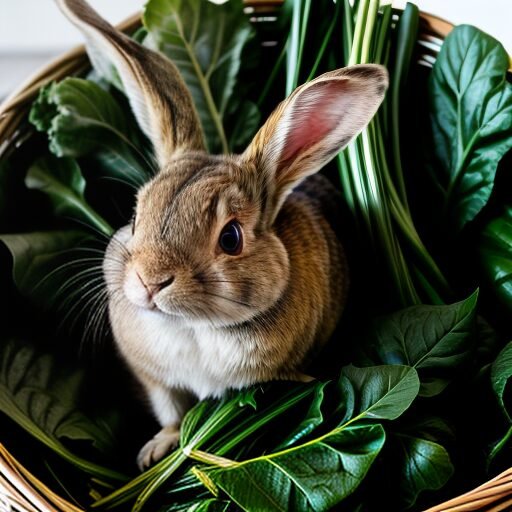
Portion Control
Collard greens should be fed in moderation to avoid potential health issues.
A recommended amount is one to two tablespoons of chopped greens per two pounds of a rabbit’s body weight.
Frequency of Feeding
These leafy greens should not be a daily staple but rather a part of a varied diet.
It’s suggested to feed collard greens to a rabbit two to three times a week, ensuring that their overall diet remains balanced.
Preparation Method
Prior to feeding, collard greens should be thoroughly washed to remove any pesticides or contaminants.
They should be served raw, as cooking can reduce the nutritional content, and cut into manageable pieces to prevent choking.
Potential Risks

While collard greens can be a nutritious addition to a rabbit’s diet, there are certain risks associated with their consumption that owners should be aware of.
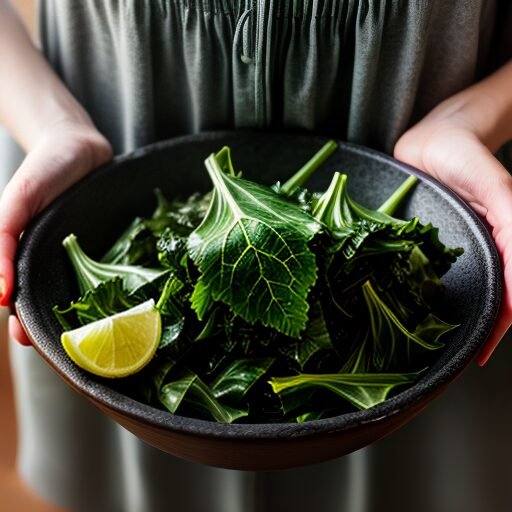
Oxalic Acid Content
Collard greens contain oxalic acid, a compound that can bind with minerals and undermine nutrient absorption.
High levels of oxalic acid, if ingested too frequently, can lead to the formation of urinary stones in rabbits, which is a serious health concern.
Gas-Producing Vegetables
Being high in fiber, collard greens fall into the category of gas-producing vegetables.
Excessive consumption can cause digestive discomfort in rabbits, leading to gas, bloating, and potential gastrointestinal stasis, which is when the digestive system slows down or stops.
Calcium-to-Phosphorus Ratio
The calcium-to-phosphorus ratio in a rabbit’s diet is crucial.
Collard greens have a high calcium content, which is generally beneficial, but an imbalance caused by too many high-calcium foods like collard greens can contribute to bladder sludge or stones, a condition that requires medical attention.
Incorporating Collard Greens Into Rabbit Diet

Introducing collard greens to a rabbit’s diet can offer nutritional benefits when done with care and moderation.
They should complement a foundation of hay, a handful of pellets, and a variety of other vegetables.
Mixing with Other Greens
When offering collard greens, they should be part of a mix with other leafy vegetables to ensure a balanced nutrient intake.
A rabbit’s meal might include romaine lettuce, kale, and herbs alongside collard greens. This variety keeps the diet interesting and nutritionally rich for the rabbit, reducing the risk of nutrient overloads.
Transitioning to New Foods
Transition is key in any dietary change for rabbits.
Introduce collard greens gradually, starting with small amounts and observing the rabbit’s response.
This measured approach helps prevent digestive disturbances, as sudden dietary changes can cause stress to their sensitive gastrointestinal systems.
Understanding Rabbit Preferences
Not all rabbits will enjoy or tolerate collard greens in their diet.
Pay close attention to individual preferences and any signs of digestive discomfort.
If a rabbit eats them eagerly without any adverse reactions, collard greens can be given as part of their regular diet rotation.
Hoppy Endings: A Balanced Diet for Your Bunny
Remember those curious glances at the collard greens at the market? Well, now you have a complete picture of how these leafy delights can enrich your rabbit’s diet!
Throughout this article, we’ve explored the nutritional powerhouse that is collard greens. We learned about the essential vitamins and minerals they provide, their role in promoting digestive and dental health, and even how they contribute to weight management in rabbits.
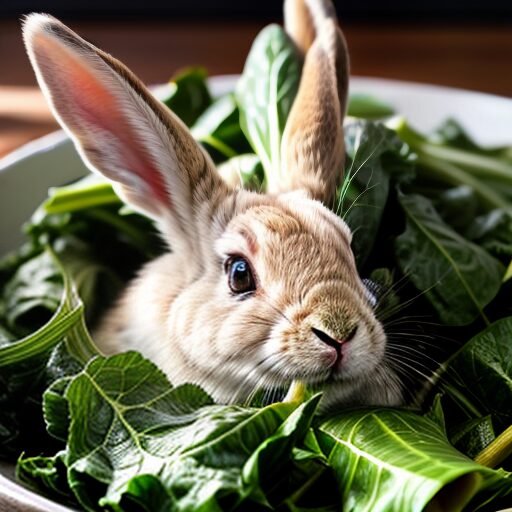
But most importantly, we emphasized the importance of moderation and safe feeding practices. We discussed portion control, frequency of feeding, and proper preparation methods to ensure your bunny enjoys the benefits of collard greens without any risks.
So, the next time you’re at the market, feel free to grab a bunch of collard greens! Just remember to introduce them gradually and in moderation alongside your rabbit’s regular hay and a variety of other safe vegetables. With this knowledge in hand, you can confidently add a delicious and nutritious twist to your rabbit’s meal plan and keep those happy hops going!
Frequently Asked Questions

This section provides clear, concise answers to common inquiries regarding the inclusion of collard greens in a rabbit’s diet.
It is important to understand the benefits, appropriate quantities, and safe practices to ensure your rabbit’s health and well-being.
What benefits do rabbits get from eating collard greens?
Collard greens are nutritious for rabbits, offering essential vitamins and minerals such as vitamins A, C, and K, as well as providing dietary fiber. These nutrients are vital for maintaining a rabbit’s healthy digestive system and overall well-being.
What is the safest amount of collard greens to feed a rabbit?
The safest amount of collard greens for a rabbit is a few leaves mixed into their regular diet, ensuring they do not comprise the majority of their food intake. It’s best to introduce them slowly to prevent digestive upset.
Are the stalks of collard greens safe for rabbit consumption?
Yes, the stalks of collard greens are safe for rabbits to eat, but they should be given in moderation due to their higher fiber content, which can be difficult for some rabbits to digest if overconsumed.
Is it okay for rabbits to eat mustard greens and turnip greens?
Rabbits can eat mustard greens and turnip greens in moderation. However, as with collard greens, they should be introduced gradually and make up only a part of a rabbit’s varied diet.
Which other vegetables are considered healthy for rabbits?
Vegetables like romaine lettuce, carrot tops, and bell peppers are considered healthy for rabbits. A diverse mix of vegetables, alongside high-quality hay and a limited number of pellets, helps ensure a balanced diet.
Can rabbits safely have collard greens in a shredded form?
Rabbits can safely eat collard greens shredded or whole, as long as they are fresh and have been washed to remove any potential pesticides or contaminants.
Shredding the greens may make them easier to mix into the rabbit’s usual diet.

